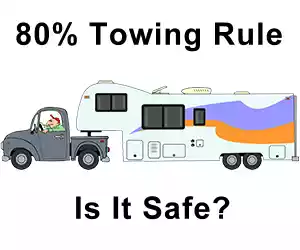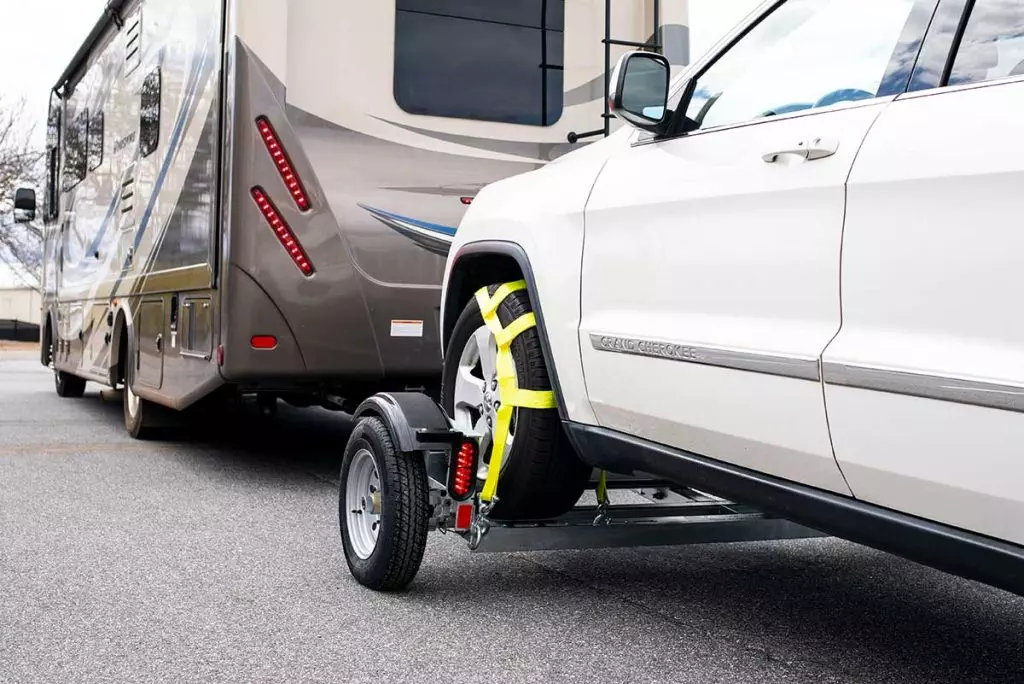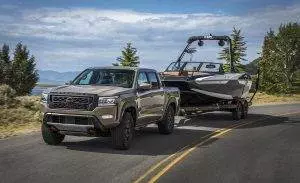In this article, we will discuss the ideal towing speed for various vehicles and situations. We will explore the factors that should be considered when determining the appropriate speed for towing, such as weight limits, road conditions, and legal restrictions. By the end, you will have a clear understanding of the recommended towing speeds to ensure a safe and efficient journey. So let’s get started and discover the right speed for your towing needs!
Factors to consider when determining towing speed
When it comes to towing vehicles, it’s essential to consider various factors that can affect the speed at which you should tow. By taking these factors into account, you can ensure a safe and secure towing experience. Let’s explore some of the key considerations when determining towing speed.
Road conditions
Road conditions play a significant role in determining the appropriate towing speed. Factors such as the surface condition, presence of potholes or bumps, and the overall smoothness of the road can impact your ability to maintain control over the towed vehicle. It’s important to be mindful of these conditions and adjust your speed accordingly. Be aware that heavy traffic and congestion can also affect your ability to maneuver safely, so it’s crucial to consider these factors as well.
Weather conditions
Weather conditions can greatly influence towing speed. Rain, wind, snow, and icy surfaces can all impact the traction and stability of your towing vehicle and the towed vehicle. It’s crucial to adjust your speed accordingly to maintain control and avoid accidents. Slower speeds are generally recommended in adverse weather conditions to ensure safe towing.
Towing vehicle capabilities
The capabilities of your towing vehicle also play a significant role in determining the appropriate speed for towing. Different vehicles have different towing capacities, and exceeding these limits can put undue stress on your vehicle, affecting its performance and safety. It’s essential to refer to your vehicle’s owner’s manual or consult with a professional to ensure you’re towing within the recommended limits.
Weight of the towed vehicle
The weight of the towed vehicle is another critical factor to consider when determining towing speed. Heavier vehicles generally require longer stopping distances and can be more challenging to maneuver, especially at higher speeds. It’s important to ensure that the weight of the towed vehicle is within the towing capacity of your vehicle and to adjust your speed accordingly.
Safe towing speeds for different types of vehicles
Different types of vehicles have varying safe towing speeds. It’s crucial to be aware of these guidelines to ensure a safe and smooth towing experience. Let’s take a closer look at the recommended towing speeds for various types of vehicles.
Cars and SUVs
Cars and SUVs typically have higher towing capabilities compared to other vehicles. However, it’s generally recommended to tow at speeds below 65 miles per hour (105 km/h) for optimal safety. Exceeding this speed limit can increase the risk of accidents and reduce stability.
Motorcycles
Towing motorcycles requires careful consideration and adherence to specific guidelines. As motorcycles are generally less stable and more susceptible to external factors such as wind, it’s important to tow at lower speeds. A recommended speed range for towing motorcycles is typically around 40-55 miles per hour (64-88 km/h).
Boats
When towing boats, it’s essential to consider the size and weight of the vessel. As boats can create additional drag and resistance, it’s generally recommended to tow at speeds below 55 miles per hour (88 km/h). Excessive speed can cause the boat to sway and affect the stability of your towing vehicle.
Trailers
Trailers come in various shapes and sizes, and their safe towing speeds can vary. However, a general rule of thumb is to tow at speeds below 65 miles per hour (105 km/h). It’s important to consult the trailer manufacturer’s guidelines and consider the weight and aerodynamics of the trailer when determining the appropriate towing speed.
RVs
RVs require careful handling and consideration when determining towing speed. These larger vehicles have specific towing capabilities, and it’s important to stay within the recommended speed range, typically below 65 miles per hour (105 km/h). Exceeding this limit can significantly impact stability and control, increasing the risk of accidents.

This image is property of i.ytimg.com.
Effects of towing speed on stability and control
Towing speed has a direct impact on the stability and control of your towing vehicle and the towed vehicle. It’s essential to understand these effects to ensure a safe and secure towing experience.
Influence on braking distance
Towing at higher speeds increases the braking distance required to come to a complete stop. The added weight of the towed vehicle can put additional strain on the braking system, making it necessary to allow for increased braking distances. It’s important to maintain a safe distance from the vehicle in front of you to account for this increased braking distance.
Impact on maneuverability
Towing at higher speeds can significantly impact the maneuverability of your towing vehicle. The increased weight and momentum of the towed vehicle make it more challenging to make quick or sudden turns. It’s crucial to reduce your speed when navigating curves or making lane changes to maintain control.
The importance of staying within recommended limits
Staying within the recommended towing speed limits is of utmost importance to maintain stability and control. The speed limits provided by vehicle manufacturers and industry standards are carefully determined to ensure safe towing practices. Exceeding these limits can compromise the safety of both your vehicle and other road users.
Additional safety measures
In addition to maintaining appropriate towing speeds, it’s essential to implement additional safety measures. Regularly check and maintain your towing vehicle to ensure it’s in good working condition. Properly distribute the weight in the towed vehicle to avoid swaying or imbalanced loads. Avoid sudden changes in speed or direction to maintain stability. Similarly, adapt your speed to specific road conditions, being mindful of speed limits and traffic regulations.
Tips for maintaining a safe towing speed
In order to maintain a safe towing speed, there are several tips to keep in mind. By following these guidelines, you can ensure a secure towing experience.
Regularly check and maintain your towing vehicle
Regular maintenance and inspections are crucial to ensure the safety and reliability of your towing vehicle. Always check the tire pressure, brake system, lights, and other essential components before embarking on a towing trip. Additionally, keep up with the suggested maintenance schedule outlined in your vehicle’s manual.
Properly distribute weight in the towed vehicle
Proper weight distribution in the towed vehicle is essential for maintaining stability and control. Ensure that the weight is evenly distributed and properly secured to minimize the risk of swaying or imbalance.
Avoid sudden changes in speed or direction
Sudden changes in speed or direction can disrupt the stability of your towing vehicle and the towed vehicle. It’s important to maintain a smooth and consistent speed throughout the towing journey. Gradually accelerate and decelerate to minimize stress on the towing components.
Adapt speed to specific road conditions
Different road conditions require adjustments in towing speed. Be mindful of road surfaces, such as potholes, bumps, or uneven pavement. Slow down when encountering these conditions to maintain control and minimize the risk of damage to your towing vehicle and the towed vehicle.
Be mindful of speed limits and traffic regulations
Always adhere to speed limits and traffic regulations while towing. It’s essential to respect the laws of the road and prioritize the safety of yourself and other road users. Adjust your speed accordingly based on posted speed limits and traffic conditions.

This image is property of fifthwheelst.com.
The dangers of exceeding safe towing speeds
Exceeding safe towing speeds can result in various hazards and dangers. It’s vital to be aware of these risks to ensure the safety of yourself, your vehicle, and other road users.
Risk of loss of control
Towing at excessive speeds increases the risk of losing control over your towing vehicle. The additional weight and momentum can affect the stability and maneuverability of your vehicle, making it more challenging to react to sudden changes in road conditions or traffic.
Increased stopping distance
Excessive towing speeds increase the stopping distance required to bring your vehicle to a complete stop. This can be dangerous, especially in emergency situations where quick braking is necessary. Failure to account for this increased stopping distance can result in rear-end collisions or accidents.
Greater likelihood of accidents
Towing at high speeds significantly increases the likelihood of accidents. The added weight and momentum of the towed vehicle make it more difficult to recover from a potential collision or loss of control. Staying within the recommended towing speeds reduces the risk of accidents and promotes safe towing practices.
Potential damage to vehicle and cargo
Excessive speeds can put excessive strain on your towing vehicle and the towed vehicle. This additional stress can result in mechanical failures or damage to the vehicle’s components. Moreover, it can also cause damage to the cargo being towed, compromising its integrity and safety.
Considerations for towing on different types of terrain
Different types of terrain require adjustments in towing speed and techniques. Let’s explore some key considerations when towing on different types of terrain.
Flat and straight roads
On flat and straight roads, you may be tempted to increase your towing speed. However, it’s important to maintain a safe and steady speed, paying attention to any changes in road conditions or traffic to ensure control and stability.
Hilly or mountainous terrains
Towing on hilly or mountainous terrains requires special attention to speed and braking techniques. Slow down when descending hills to avoid excessive strain on your towing vehicle’s brakes. Utilize lower gears and engine braking to maintain control and reduce the risk of overheating your brakes.
Windy or gusty areas
Windy or gusty areas can significantly impact the stability of your towing vehicle and the towed vehicle. Reduce your speed to compensate for the wind resistance and to maintain control. Strong crosswinds can especially affect the handling of your towing vehicle, so it’s crucial to adjust your speed accordingly.
Rural versus urban environments
Towing in rural and urban environments requires different considerations. In rural areas, roads may be narrower and less predictable, requiring slower speeds and increased caution. In urban areas, traffic congestion and frequent stops and starts necessitate a slower towing speed to ensure safe maneuverability.

This image is property of cartowdolly.com.
The importance of adjusting towing speed for emergencies
In emergency situations, the ability to respond quickly is crucial. Adjusting your towing speed becomes even more vital to ensure a safe and effective response.
Necessity of quick response time
When towing, it’s essential to have a quick response time to avoid accidents or potential hazards. Adapting your speed accordingly allows you to react appropriately and maintain control over your towing vehicle and the towed vehicle.
Safety precautions when towing in emergency situations
Towing in emergency situations requires additional safety precautions. Be aware of your surroundings and any potential obstacles. Maintain a safe distance from other vehicles and stay vigilant to navigate any unforeseen challenges quickly and effectively.
Adapting to unexpected hazards or obstacles
Unexpected hazards or obstacles can arise at any time while towing. It’s crucial to adjust your speed and response accordingly to avoid collisions or accidents. Being prepared and alert allows you to navigate these challenges safely.
Proper braking techniques when towing
Braking while towing requires specific techniques to ensure optimal safety and control. Let’s take a closer look at some essential braking tips for towing.
Allowing for increased braking distance
The added weight of the towed vehicle increases the braking distance required. It’s important to allow for an extended stopping distance and maintain a safe distance from the vehicle ahead of you. This gives you enough time to react and stop safely.
Utilizing trailer brakes when available
If your towing vehicle is equipped with trailer brakes, it’s crucial to utilize them effectively. Trailer brakes can assist in reducing the strain on your towing vehicle’s braking system and provide additional control.
Avoiding excessive use of brakes
Excessive use of brakes can lead to brake fade and decreased stopping power, especially when towing heavy loads. It’s important to avoid continuous and excessive braking, especially when descending steep hills or navigating winding roads. Downshifting and engine braking can help maintain control and reduce the strain on your braking system.
Downshifting when descending hills
When towing on steep inclines or descending hills, downshifting can aid in controlling your speed and reducing wear on your brakes. Shifting to a lower gear allows your engine to assist in braking, providing additional control and stability.

This image is property of i.ytimg.com.
Considerations for long-distance towing
Long-distance towing requires careful planning and attention to specific considerations to ensure a safe and successful journey. Let’s explore some key tips for long-distance towing.
Planning breaks and rest stops
Long-distance towing can be physically and mentally demanding. It’s crucial to plan regular breaks and rest stops to avoid fatigue and maintain focus. Use these breaks to check the condition of your tires, inspect your towing vehicle and the towed vehicle, and ensure that the cargo is secure.
Keeping an eye on tire conditions
Monitoring tire conditions is essential for long-distance towing. Check the tire pressure regularly to ensure optimal performance and safety. Be mindful of any signs of wear or damage and address them promptly to avoid tire failure during your journey.
Regularly checking fuel levels and engine temperature
Long-distance towing can put additional strain on your engine and fuel consumption. It’s important to monitor your fuel levels and engine temperature regularly. Refuel as necessary to avoid running out of fuel, and keep an eye on your engine temperature to prevent overheating.
Monitoring trailer and cargo stability
During long-distance towing, it’s crucial to monitor the stability of your trailer and cargo. Make periodic stops to ensure that everything is properly secured and distributed. Adjust as necessary to minimize the risk of swaying or imbalance.
Conclusion
Determining the appropriate towing speed is vital for a safe and secure towing experience. By considering factors such as road and weather conditions, towing vehicle capabilities, and the weight of the towed vehicle, you can make informed decisions about the recommended towing speeds. It’s important to stay within the recommended limits to avoid accidents, maintain stability, and ensure the safety of yourself and other road users. By following proper braking techniques, adapting to different terrains, and adjusting your speed for emergencies, you can ensure a smooth and stress-free towing journey. Remember to prioritize safety, regularly maintain your towing vehicle, and adhere to traffic regulations for a successful towing experience.

This image is property of images.squarespace-cdn.com.

